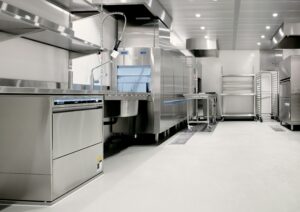Oven temperature accuracy is a crucial factor in achieving consistent and desirable cooking and baking results. Whether you’re roasting a chicken, baking a cake, or broiling vegetables, the temperature at which your oven operates can greatly impact the outcome of your culinary endeavors. Inaccurate oven temperature can lead to undercooked or overcooked food, uneven browning, and other issues that can affect the taste, texture, and appearance of your dishes. Therefore, it is important to understand the importance of accurate oven temperature and how to ensure that your oven is calibrated and functioning properly.
Key Takeaways
- Accurate oven temperature is crucial for successful cooking and baking.
- Common problems with oven temperature include uneven heating, inaccurate readings, and fluctuations.
- Identifying oven temperature issues can be done through visual cues, such as unevenly cooked food, or by using a thermometer.
- Tools for measuring oven temperature include oven thermometers, infrared thermometers, and digital probes.
- Understanding oven calibration and how to calibrate your oven can help ensure accurate temperature readings and prevent issues.
The Importance of Accurate Oven Temperature
Accurate oven temperature is crucial for achieving consistent and desirable cooking and baking results. When a recipe calls for a specific oven temperature, it is because that temperature has been determined to be the optimal heat level for that particular dish. If your oven is not calibrated correctly and is running too hot or too cold, it can throw off the cooking time and result in undercooked or overcooked food.
Inaccurate oven temperature can also lead to uneven browning. For example, if your oven runs too hot, the outer edges of your baked goods may brown too quickly while the center remains undercooked. On the other hand, if your oven runs too cold, your food may not brown evenly at all. This can be especially problematic when it comes to baking delicate pastries or breads that require an even rise and golden crust.
Common Problems with Oven Temperature
There are several common issues that can affect oven temperature accuracy. One common problem is faulty heating elements. Heating elements are responsible for generating heat in the oven, and if they are not functioning properly, they may not distribute heat evenly or reach the desired temperature.
Another common issue is a malfunctioning thermostat. The thermostat is responsible for regulating the oven’s temperature, and if it is not working correctly, it may not accurately measure and maintain the desired temperature. This can result in fluctuations in temperature throughout the cooking process.
Poor insulation is another factor that can affect oven temperature accuracy. If your oven is not properly insulated, heat may escape from the oven cavity, causing the temperature to fluctuate and making it difficult to maintain a consistent temperature.
Identifying Oven Temperature Issues
There are several ways to identify oven temperature issues. One simple method is to use an oven thermometer. Place the thermometer in the center of the oven and set the oven to a specific temperature. After about 15 minutes, check the thermometer to see if it matches the set temperature. If there is a significant difference, it may indicate that your oven is not calibrated correctly.
Observing cooking and baking results can also help identify oven temperature issues. If your food consistently comes out undercooked or overcooked, or if it browns unevenly, it may be a sign that your oven temperature is not accurate.
Some ovens are equipped with error codes that can help identify temperature issues. If your oven displays an error code, consult the owner’s manual or contact the manufacturer for troubleshooting guidance.
Tools for Measuring Oven Temperature
There are several tools that can be used to measure oven temperature. One common tool is an oven thermometer. These thermometers are designed to withstand high temperatures and can be placed inside the oven to provide an accurate reading of the internal temperature.
Infrared thermometers are another option for measuring oven temperature. These thermometers use infrared technology to measure the surface temperature of an object without making direct contact. They can be pointed at different areas of the oven to get an idea of how heat is distributed.
Digital probes are also commonly used to measure oven temperature. These probes have a metal tip that can be inserted into food to measure its internal temperature. They can also be placed inside the oven to measure the ambient temperature.
Understanding Oven Calibration

Oven calibration is the process of adjusting the oven’s thermostat to ensure that it accurately measures and maintains the desired temperature. Over time, the thermostat may become less accurate due to wear and tear or other factors. Therefore, it is important to periodically calibrate your oven to ensure that it is functioning properly.
Oven calibration works by comparing the temperature displayed on the oven’s control panel to the actual temperature inside the oven. This can be done using an oven thermometer or a digital probe. If there is a significant difference between the displayed temperature and the actual temperature, the oven’s thermostat may need to be adjusted.
The frequency at which you should calibrate your oven depends on how often you use it and how accurate you need the temperature to be. As a general rule, it is recommended to calibrate your oven at least once a year.
How to Calibrate Your Oven
Calibrating your oven is a relatively simple process that can be done using an oven thermometer or a digital probe. Here are step-by-step instructions on how to calibrate your oven:
1. Preheat your oven to a specific temperature, such as 350°F (175°C).
2. Place an oven thermometer or a digital probe inside the oven and close the door.
3. Allow the oven to preheat for about 15 minutes.
4. Check the temperature displayed on the oven’s control panel and compare it to the reading on the thermometer or probe.
5. If there is a significant difference between the displayed temperature and the actual temperature, you may need to adjust the oven’s thermostat.
6. Consult your oven’s owner’s manual for instructions on how to adjust the thermostat. This may involve turning a dial or pressing buttons on the control panel.
7. Make small adjustments to the thermostat and repeat steps 1-6 until the displayed temperature matches the actual temperature.
8. Once you have calibrated your oven, test it by cooking or baking something that requires a specific temperature. Monitor the cooking or baking process to ensure that the food is cooking evenly and to the desired level of doneness.
Troubleshooting Oven Temperature Problems
During the oven calibration process, you may encounter some common issues. One issue is inaccurate thermometer readings. If the thermometer you are using is not calibrated correctly or is not functioning properly, it may provide inaccurate readings. To ensure accurate readings, use a high-quality thermometer and calibrate it according to the manufacturer’s instructions.
Another issue that may arise is difficulty adjusting the oven’s thermostat. Some ovens have a limited range of adjustment, which can make it challenging to fine-tune the temperature. If you are having trouble adjusting the thermostat, consult your oven’s owner’s manual or contact the manufacturer for assistance.
Common Fixes for Oven Temperature Issues
There are several common fixes for oven temperature issues. One fix is to replace faulty heating elements. Heating elements can wear out over time and may need to be replaced to ensure even heat distribution and accurate temperature control.
Recalibrating the thermostat is another fix for oven temperature issues. As mentioned earlier, the thermostat may become less accurate over time and may need to be adjusted to maintain accurate temperature control.
Improving insulation can also help address oven temperature issues. If your oven is not properly insulated, heat may escape from the oven cavity, causing temperature fluctuations. Adding insulation or replacing worn-out insulation can help maintain a consistent temperature.
Maintaining Optimal Oven Temperature
To maintain optimal oven temperature, there are several tips you can follow. First, clean your oven regularly to remove any built-up grease or food debris that can affect heat distribution. A clean oven will heat more efficiently and maintain a more consistent temperature.
Avoid overcrowding your oven when cooking or baking. Overcrowding can restrict airflow and prevent heat from circulating evenly, resulting in uneven cooking or baking. Leave enough space between dishes to allow for proper heat circulation.
Using the right cookware can also help maintain optimal oven temperature. Use oven-safe cookware that is appropriate for the dish you are preparing. Avoid using dark-colored or non-stick pans, as they can absorb and retain heat differently than lighter-colored or stainless steel pans.
Benefits of Proper Oven Temperature Control
Maintaining accurate oven temperature has several benefits. First and foremost, it ensures consistent cooking and baking results. When your oven is calibrated correctly, you can trust that your food will cook evenly and to the desired level of doneness.
Proper oven temperature control also improves food safety. Cooking food at the correct temperature helps kill bacteria and other pathogens that can cause foodborne illnesses. Undercooked food can pose a health risk, so it is important to ensure that your oven is calibrated and cooking at the correct temperature.
Lastly, maintaining accurate oven temperature can lead to energy efficiency. When your oven is calibrated correctly, it will heat up faster and maintain a more consistent temperature, reducing the amount of time it takes to cook or bake your dishes. This can help save energy and reduce your utility bills.
Accurate oven temperature is crucial for achieving consistent and desirable cooking and baking results. Inaccurate oven temperature can lead to undercooked or overcooked food, uneven browning, and other issues that can affect the taste, texture, and appearance of your dishes. By understanding the importance of accurate oven temperature and taking steps to ensure that your oven is calibrated and functioning properly, you can enjoy more successful culinary endeavors. Take the time to identify any oven temperature issues, use the right tools to measure oven temperature, calibrate your oven as needed, troubleshoot any problems that arise, and maintain optimal oven temperature for better cooking and baking results.
If you’re interested in learning more about common oven problems and how to fix them, check out the article “Common Oven Issues and Solutions” on our blog. This informative piece provides valuable insights into troubleshooting and resolving various oven-related issues. From temperature inconsistencies to faulty heating elements, this article covers it all. Don’t let oven problems ruin your cooking experience – click here to read the full article and become an oven troubleshooting pro!
What are the common causes of inconsistent oven temperatures and how can they be fixed?
Inconsistent oven temperatures can frustrate even the most experienced home cooks. The common causes include faulty heating elements, temperature sensor issues, and poor insulation. To fix these problems, try troubleshooting inconsistent heating solutions such as recalibrating the temperature settings, replacing faulty components, and ensuring proper ventilation for even heat distribution.



